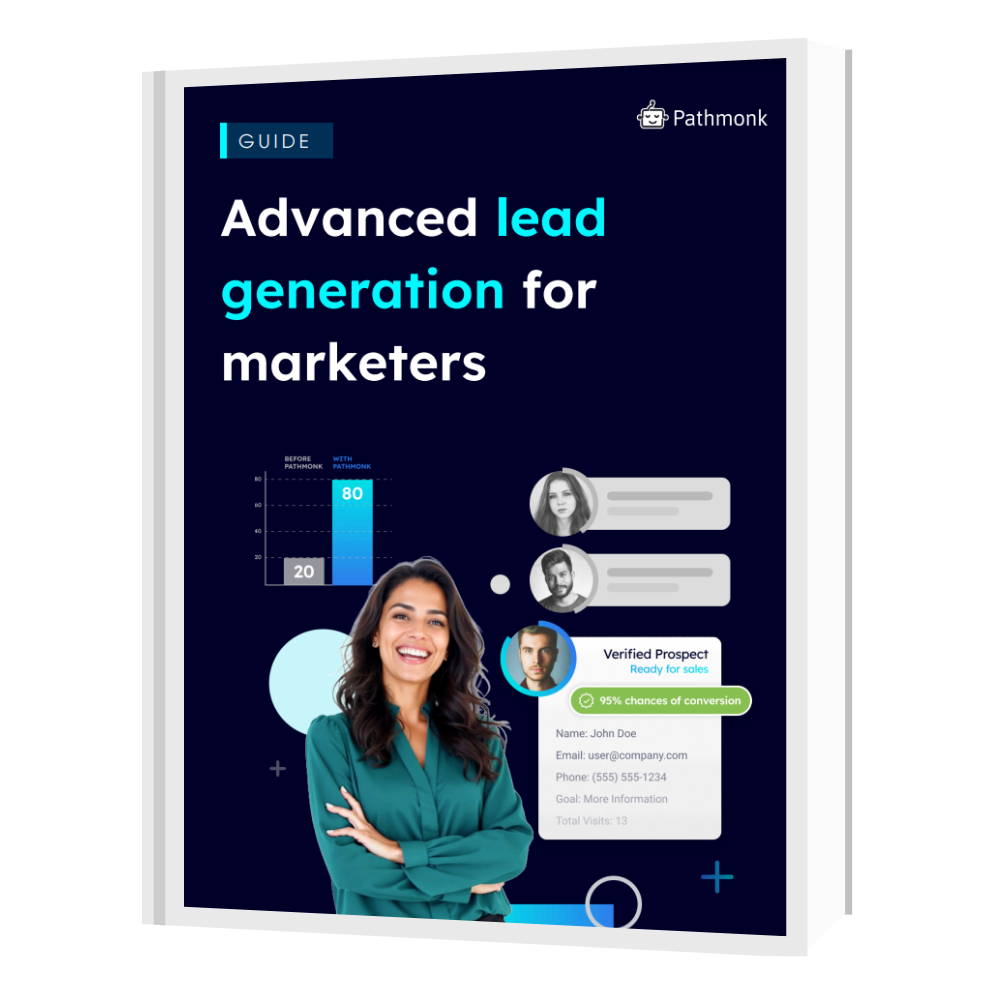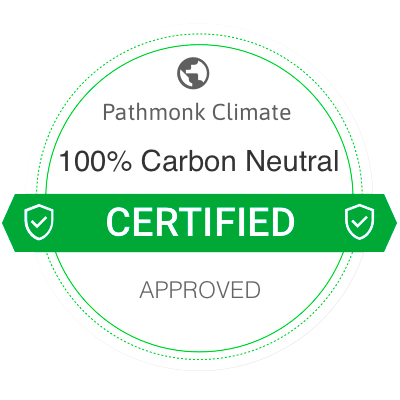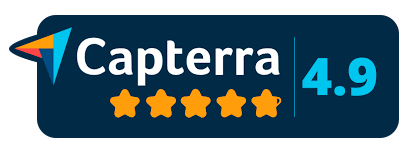GLOSSARY
Click-through rate (CTR)
The percentage of users who click on a link, ad, or CTA after viewing it. A key metric for measuring attention, interest, and message effectiveness.
Click-through rate (CTR) measures how effective a webpage element — such as a link, button, ad, or call to action — is at generating clicks from users who view it. Whether it’s a Google Search ad, a promotional email, or a homepage banner, CTR quantifies the ratio between impressions (views) and user actions (clicks). It’s a fundamental performance metric in digital marketing and CRO.
CTR is often the first signal of user interest or engagement. A high CTR suggests that your messaging, visuals, and targeting resonate with your audience. A low CTR, on the other hand, might indicate weak copy, poor design, or a misaligned offer. Understanding and improving CTR is essential for driving traffic into your funnel, it’s where conversion begins.
Why is click-through rate important?
Click-through rate acts as a leading indicator of relevance and engagement. It tells you how compelling your content or offer is, whether users are interested enough to take the next step. In advertising (like Google Ads or Facebook campaigns), a higher CTR usually results in better ad placement and lower costs per click. In emails, CTR shows whether the content resonates beyond just the subject line.
CTR is also critical for diagnosing weak spots in the customer journey. If a campaign has a strong impression count but low CTR, the issue likely lies in the creative or targeting. Conversely, a high CTR but low conversion rate might signal friction further down the funnel. That’s why marketers monitor CTR closely, not just as a vanity metric, but as a window into audience intent and message fit.
Generate better leads to grow your sales
Discover new strategies to unlocking a flood of high-quality leads from your website.

How to calculate click-through rate
The formula is straightforward:
CTR = (Total Clicks ÷ Total Impressions) × 100
For example, if your ad was shown 10,000 times and received 250 clicks: (250 ÷ 10,000) × 100 = 2.5% CTR
The higher the percentage, the more effectively your message or creative drives engagement. What’s considered a “good” CTR varies widely by industry and channel — for instance, 1–2% is often solid for display ads, while 3–5% may be expected from branded email campaigns.
How to improve your click-through rate
- Write compelling headlines or ad copy: Your headline or link text should immediately capture attention and hint at the benefit or value. Use curiosity, urgency, or direct value, such as “Save 20% Today” or “Get the Full Checklist.” Generic copy like “Click Here” won’t inspire action.
- Use strong, relevant visuals: For display ads, social posts, or banners, eye-catching visuals can make or break your CTR. Ensure they’re high quality, relevant to the offer, and aligned with your brand. Test different styles (e.g., illustrations vs. product photos) to see what resonates.
- Target the right audience: CTR plummets when your message reaches the wrong people. Use behavioral data, segmentation, or platform-specific targeting options to ensure your campaigns speak to users with actual intent or need.
- Test different CTA placements and formats: Sometimes, clicks improve just by repositioning a button, rephrasing the CTA, or adding a visual cue like an arrow. A/B test formats (text link vs. button), placement (top vs. bottom), and even animation (static vs. hover effects).
- Optimize for mobile: A responsive design with mobile-friendly CTAs ensures higher visibility and accessibility. On small screens, buttons should be easily tappable, text should be legible, and CTAs should appear before users lose interest.
How Pathmonk helps improve CTR
Click-through rate isn’t just about having the right copy on a button, it’s about how well you prepare users to want to click in the first place. That’s where Pathmonk comes in. While most tools focus on testing CTA wording or button design, Pathmonk takes a different, more strategic approach: it personalizes the entire experience leading up to the CTA. This means users don’t just see a call to action — they’re primed to engage with it.
Pathmonk’s AI analyzes each visitor’s behavior in real time, identifying what stage of the buyer journey they’re in and what content format is most likely to nudge them forward. For example, a new visitor might be greeted with a short, value-driven explainer video to reduce confusion and introduce the offer. Someone returning after visiting your pricing page might see a testimonial from a similar company to reduce friction and boost trust. High-intent users could be shown a short quiz or diagnostic to confirm fit and build momentum before they encounter the final CTA.
By adapting the journey based on behavioral signals — not just demographics or page views — Pathmonk ensures that every click is more intentional. Users arrive at the CTA after already having key objections handled and benefits reinforced. This increases CTR without requiring multiple landing pages, popup tools, or developer resources. The core CTA remains consistent (e.g., “Book a demo”), but the pathway toward it is entirely dynamic and intent-based.
The result? Higher click-through rates, especially from previously passive or hesitant users. And because Pathmonk tracks every interaction, marketers gain access to granular insights: which micro-experience performed best, which sequences drive the most engagement, and how CTR improves over time across segments. It’s a smarter, frictionless way to boost performance — not by yelling louder, but by saying the right thing at the right time.
Increase +180%
leads
demos
sales
bookings
from your website with AI
Get more conversions from your existing website traffic delivering personalized experiences.

Related articles about CTR
- AI-Powered Ad Creative Optimization for Higher Click-Through Rates
- How Can Businesses Optimize For Zero-Click Searches?
- How the Foot-in-the-Door Marketing Technique Increases Conversions
- 7 Marketing Tricks Delivering Real Conversion Treats
FAQs on CTR
1. What is a good CTR?
A “good” click-through rate varies widely depending on the marketing channel, industry, audience intent, and even the stage of the funnel. For example, in Google Search Ads, a CTR between 3–5% is generally considered strong, especially for high-intent keywords. In display advertising, where users are less primed to take action, a CTR of 0.5–1% might be normal. Email marketing campaigns often average between 1–3%, depending on list quality, segmentation, and offer relevance. It’s important not to judge CTR in isolation — look at historical trends, compare by channel, and set benchmarks based on your specific goals and audience.
What truly matters is how CTR fits into your larger funnel. A high CTR may look impressive, but if those users don’t convert, it could be a sign of misalignment between the click promise and the landing experience. Conversely, a lower CTR with high downstream conversion might indicate you’re attracting the right quality of traffic, even if fewer people are clicking. That’s why CTR should always be paired with conversion rate, bounce rate, and ROI to get a full picture of performance. Don’t chase vanity metrics — chase qualified engagement.
2. Why is my CTR low?
Low CTRs usually mean your content, offer, or messaging isn’t resonating with the audience viewing it. This disconnect could be caused by several things: uninspired headlines, bland or generic CTAs, poor visual appeal, or even simply targeting the wrong segment. For example, running a technical B2B ad to a general lifestyle audience is unlikely to gain traction, no matter how well-written it is. In some cases, low CTRs also signal timing issues — maybe the user isn’t far enough along the journey to care about your offer yet.
To fix this, start by digging into the data: segment your results by device, location, channel, and user behavior. Use tools like heatmaps, session recordings, and click tracking to see what users are ignoring or missing. A/B test different CTA formats, ad angles, or subject lines. You can also experiment with emotional framing (e.g., urgency, curiosity, or authority). Often, subtle changes in headline tone or CTA wording can significantly shift how users perceive your message — and boost clicks without needing a full redesign.
3. Does CTR affect SEO?
CTR is not a direct Google ranking factor — at least not officially. However, many SEO experts and studies have observed that pages with higher organic CTRs tend to perform better over time. Why? Because a high CTR from search results often signals to search engines that your content is more relevant or engaging than competing listings. If users consistently choose your result over others, it’s a strong user signal, which may influence how Google ranks your page for similar queries in the future.
Beyond potential algorithmic boosts, optimizing CTR improves the value of your existing rankings. If you’re already on page one of Google, improving your title tags, meta descriptions, and rich snippets to increase clicks can have an outsized impact — all without needing to climb higher. Even a modest increase in organic CTR can lead to hundreds or thousands of additional visits over time, making it one of the most efficient CRO strategies in your SEO playbook.
4. How is CTR different from conversion rate?
CTR and conversion rate measure two different but related things — one tracks attention, the other measures action. Click-through rate tells you how effective your creative or messaging is at getting users to engage, such as clicking an ad or CTA. It reflects the strength of your first impression: your headline, visual, and value proposition. It’s particularly useful for diagnosing the top of the funnel: if people aren’t clicking, they’re not even entering your conversion path.
Conversion rate, on the other hand, measures how many people who clicked actually completed a goal — whether it’s submitting a form, booking a demo, or making a purchase. It reflects the strength of your offer and experience after the click. Both metrics are essential for optimization: a high CTR with a low conversion rate often signals a disconnect between the promise and the landing experience, while a low CTR with high conversion might mean you’re underselling a great product. For sustainable growth, both must be carefully monitored and improved in parallel.
5. How can personalization improve CTR?
Personalization boosts CTR by making your content feel more relevant, timely, and intentional. Users are far more likely to click on something that reflects their interests, behavior, or stage in the journey. For example, a first-time visitor might respond to a “See how it works” CTA paired with an intro video, while a returning user might click a “Start your free trial” prompt alongside a testimonial from their industry. This tailored approach creates a sense of familiarity and alignment — users feel like the page was made for them.
Tools like Pathmonk bring this to life through intent-based behavioral personalization. The platform doesn’t just change the CTA wording — it changes what leads up to the CTA. Based on user behavior, it might show a product walkthrough, a short quiz, or a targeted case study before inviting the user to act. This removes friction, answers questions proactively, and builds trust — increasing the chances that the user will click the CTA with confidence. Personalization transforms your site from a static experience to a responsive journey — and that shift drives significantly stronger engagement.




